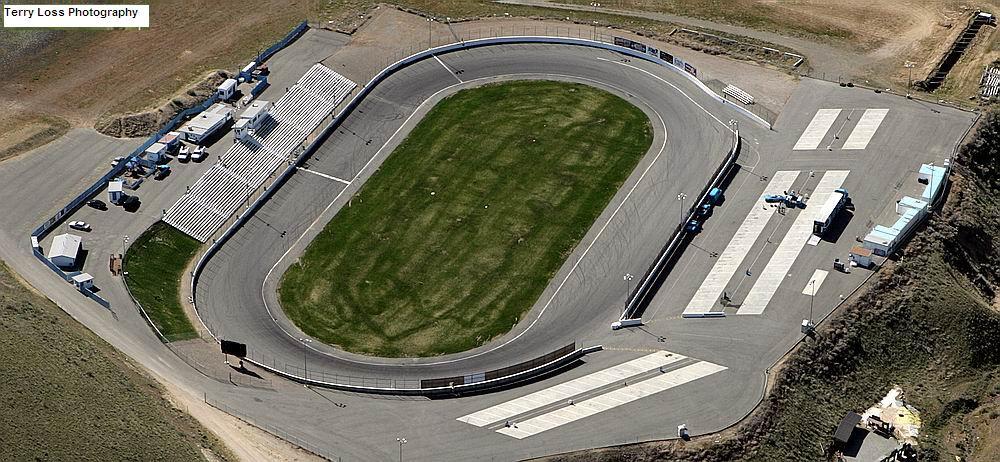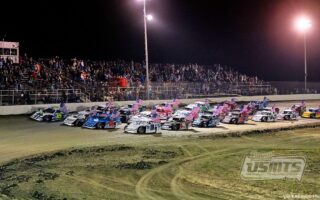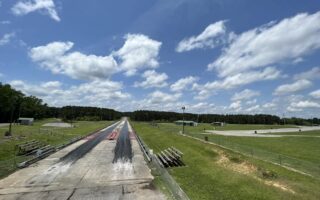In the heart of the racing world, where speed meets strategy and adrenaline intertwines with precision, the oval raceway stands as a testament to engineering marvel and athletic prowess. This iconic track design, characterized by its elongated, circular shape, has captured the imaginations of fans and drivers alike, serving as a stage for high-octane competition and nail-biting drama. As engines roar and tires grip the asphalt, the oval raceway transforms into a battleground where every turn and straightaway holds the potential for glory or heartbreak. Delve into the evolution, significance, and unique魅力 of the oval raceway, where the pursuit of victory thrives under the watchful eyes of passionate spectators. Whether you’re a seasoned enthusiast or new to the world of motorsport, this exploration promises to reveal the intricate dance between man, machine, and the racetrack.
Table of Contents
- Understanding the Dynamics of Oval Raceway Design
- Maximizing Performance: Track Surface and Layout Considerations
- Safety Protocols and Innovations in Oval Racing
- Enhancing Fan Experience: Amenities and Accessibility Strategies
- Q&A
- The Conclusion
Understanding the Dynamics of Oval Raceway Design
Designing an oval raceway encompasses a myriad of factors that influence the speed, safety, and overall racing experience. While the primary objective is to create a track that allows for thrilling competition, designers must balance several critical elements, including:
- Banking Angles: The incline of the track can significantly affect the momentum of the vehicles. Appropriate banking tailored to the race type promotes higher speeds while ensuring driver control.
- Track Surface: Material selection is crucial for providing optimal grip and managing tire wear. A well-engineered surface helps maintain consistent performance throughout races.
- Length and Width: These dimensions dictate the racing strategy. Wider tracks can facilitate overtaking, whereas shorter circuits may lead to tighter, more strategic racing.
Beyond physical design, understanding the interaction between the vehicles and the raceway is paramount. The unique aerodynamic behavior of race cars, coupled with track design, can create different racing line options. For instance, a well-crafted oval allows for various approaches to corners, as summarized in the table below:
| Racing Line Types | Characteristics |
|---|---|
| High Line | Utilizes the outer edge for higher speeds, ideal in certain conditions. |
| Low Line | Offers tighter cornering; increases chances of overtaking. |
| Middle Line | Compromise between speed and control, often favored in mixed conditions. |
By considering these dynamics, designers can create tracks that are not only exhilarating but also encourage strategic racing, engaging both participants and spectators alike in an exciting motorsport experience.
Maximizing Performance: Track Surface and Layout Considerations
When it comes to oval raceways, the track surface plays a crucial role in determining vehicle performance and safety. The material choice, be it asphalt, concrete, or a specialized composite, directly impacts traction and tire wear. High-quality surfaces promote consistent grip, allowing drivers to maintain speed through corners and minimize slippage. Additionally, the lay of the track should accommodate drainage to prevent water accumulation, which can lead to unsafe driving conditions during rain. Some key aspects of track surfaces and layout include:
- Tire Interaction: The texture of the track surface influences how tires engage, affecting cornering and acceleration.
- Temperature Management: Materials that dissipate heat help maintain optimal performance during extended races.
- Consistency: A uniform surface ensures predictable handling, crucial for competitive racing.
Layout considerations are equally significant, as they shape racing strategies and driver performance. The geometry of an oval can dictate not only the placement of turns but also the banking angles that affect speed. Tracks designed with higher banking allow for increased velocity and thrilling overtaking maneuvers, while tighter turns can challenge drivers. Here are some important attributes regarding layout:
| Attribute | Impact |
|---|---|
| Banking Angle | Influences speed and cornering ability. |
| Turn Radius | Affects acceleration and braking patterns. |
| Length of Straightaways | Determines opportunities for overtaking. |
Safety Protocols and Innovations in Oval Racing
In the heart of oval racing, safety protocols are evolving at a rapid pace, reflecting the commitment of race organizers and teams to protect drivers and spectators alike. With the use of cutting-edge materials and innovative designs, such as energy-absorbing barriers and advanced helmet technology, the sport is becoming safer than ever. Additionally, teams now employ real-time data monitoring systems that track driver vitals during races, ensuring that medical teams can respond swiftly to any emergency. Furthermore, training the pit crews in emergency response creates a culture of preparedness that enhances overall safety on the track.
Innovations extend beyond just protective equipment. The introduction of digital track mapping systems allows for precise analysis of race conditions and potential hazards, helping teams make informed decisions about strategy and safety. Moreover, the implementation of virtual reality simulations for driver training not only prepares racers for high-stakes scenarios but also equips them with the skills to handle unexpected situations on the track. These advancements are complemented by ongoing research into the biomechanics of racing, aimed at reducing the long-term effects of impacts on drivers’ health. The collective effort to bring safety innovations into oval racing marks a significant stride toward safeguarding the future of this exhilarating sport.
Enhancing Fan Experience: Amenities and Accessibility Strategies
Creating a thrilling atmosphere at the oval raceway goes beyond the adrenaline of the race itself; it extends into the comfort and enjoyment of every fan. By investing in modern amenities, we can ensure that every visit is memorable. Key features include:
- Comfortable seating: Ergonomically designed seats with ample legroom allow fans to enjoy the races without discomfort.
- Enhanced food and beverage options: A diverse selection of gourmet food stalls, craft beverages, and local delicacies cater to all tastes.
- Family-friendly zones: Designated areas with interactive activities, games, and safe play spaces keep younger fans engaged.
Accessibility remains a top priority for the oval raceway, ensuring that every fan feels welcome and accommodated. Implementing thoughtful strategies can truly make a difference. Consider the following:
| Accessibility Feature | Description |
|---|---|
| Wheelchair Access | Wide pathways and ramps provide easy access to all seating areas. |
| Accessible Restrooms | Conveniently located facilities designed for accessibility. |
| Assistance Services | Trained staff available to assist guests with special needs. |
Q&A
Q&A: Understanding Oval Raceways
Q1: What is an oval raceway?
A: An oval raceway is a specialized track layout characterized by its elongated oval shape, which allows for high-speed racing and is commonly used in motorsports such as stock car racing, open-wheel racing, and more. The design facilitates continuous circulation, offering drivers the opportunity to maintain high speeds while navigating turns.
Q2: How do oval raceways differ from other types of racetracks?
A: Unlike road courses that feature a variety of turns and elevation changes, oval raceways are typically more uniform in shape. They often consist of left-hand turns, although some ovals include right-hand turns and multi-configuration layouts. This simplicity allows for easier track management and a focus on acceleration, cornering speed, and driver strategy.
Q3: What are some notable oval raceways in the world?
A: Iconic oval raceways include the Indianapolis Motor Speedway, home of the famed Indy 500; Daytona International Speedway, known for the Daytona 500; and Bristol Motor Speedway, famous for its short track racing. Each of these venues holds a rich history and attracts thousands of racing fans annually.
Q4: What types of vehicles race on oval raceways?
A: Oval raceways host a variety of vehicles, with stock cars, Indy cars, and sprint cars being among the most common. These vehicles are specifically designed for high-speed competition on flat tracks, featuring powerful engines and aerodynamics tailored to maximize performance in an oval configuration.
Q5: What are the safety considerations at oval raceways?
A: Safety is paramount at oval raceways. Tracks are equipped with features such as SAFER barriers, which absorb impacts, and ample runoff areas. Drivers are required to wear advanced safety gear, including helmets and fire-resistant suits. Additionally, teams often conduct simulations and drills to prepare for emergency situations.
Q6: How do race strategies differ in oval racing compared to road racing?
A: In oval racing, drivers often focus on maintaining speed and mastering the art of drafting—where they closely follow another vehicle to reduce aerodynamic drag. Strategy revolves around pit stops, tire wear, and fuel management, as well as the timing of overtakes during cautions. In contrast, road racing requires more emphasis on braking, cornering techniques, and navigating diverse terrains.
Q7: What is the significance of fan engagement at oval raceways?
A: Fan engagement is a critical aspect of oval racing culture. Many events offer experiences such as meet-and-greets with drivers, pit tours, and interactive displays, allowing fans to connect with the sport on a personal level. The vibrant atmosphere, with roaring engines and cheering crowds, enhances the overall experience, making oval racial events a cherished tradition for many.
Q8: Are oval raceways sustainable in the long term?
A: Sustainability in oval racing is a growing concern, with efforts being made to reduce the environmental impact of events. This includes initiatives to enhance energy efficiency, promote alternative fuels, and minimize waste. Many raceways are also exploring partnerships with local communities to foster eco-friendly practices.
Q9: How has oval racing evolved over the years?
A: Oval racing has undergone significant changes since its inception, driven by advancements in technology, vehicle design, and safety protocols. The rise of data analytics and telematics allows teams to make real-time decisions that enhance performance. Additionally, the sport has adapted to changing fan preferences, embracing social media and digital platforms to enhance outreach and engagement.
Q10: Where can I find more information about oval racing events?
A: For more information about oval racing events, schedules, and ticketing, you can visit the official websites of major racing organizations, such as NASCAR and INDYCAR. Local raceway websites also provide resources for upcoming events, community engagement, and ticket purchasing options.
The Conclusion
the oval raceway stands as a timeless testament to the thrill of motorsport, combining tradition and innovation in a track design that has captivated racing enthusiasts for generations. From the exhilarating rush of high-speed laps to the intricate strategies that unfold during each event, oval racing offers a unique blend of skill and spectacle. As we look toward the future, these circuits will continue to evolve, challenging drivers and entertaining fans with their distinctive charm. Whether it’s the roar of the engines, the smell of rubber, or the camaraderie among spectators, the oval raceway remains a sacred ground for all who cherish the relentless pursuit of speed and competition. As we turn off the engines and step away from the track, one thing is for certain: the legacy of the oval will forever remain etched in the heart of motorsport history.



